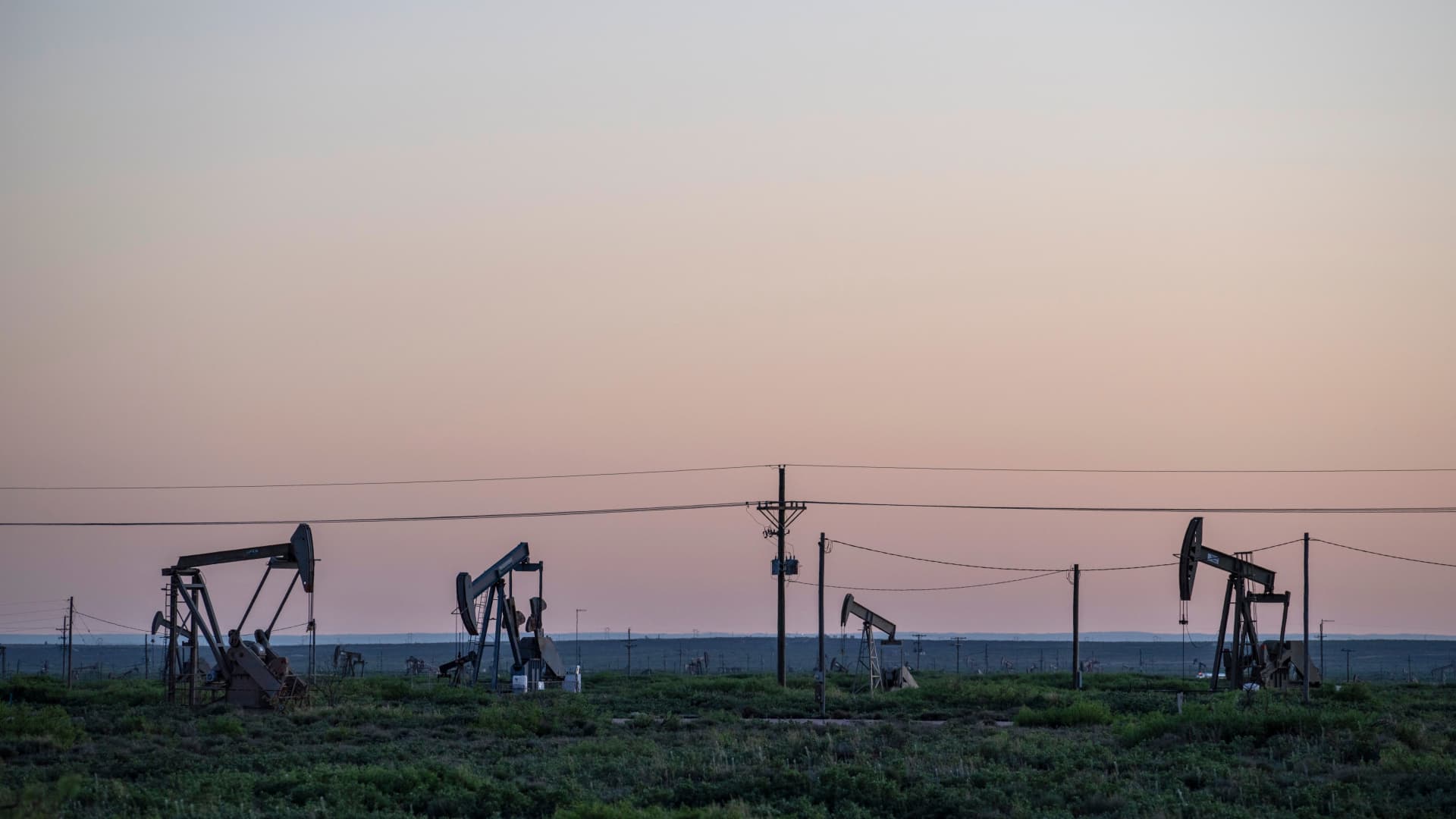Pioneer delivers strong quarterly results — but that isn’t what shines the brightest

Pioneer Natural Resources (PXD) reported strong second-quarter profits and cash flow after the bell Tuesday, but favorable revisions to its guidance shined the brightest. Pioneer’s oil-and-gas revenue totaled $2.98 billion, down nearly 36% from the year-ago period. It’s unclear how this figure stacks up to the Refinitiv estimate of $3.52 billion, which we think factors in oil and gas plus other income items. Adjusted earnings per share of $4.49 solidly outpaced the consensus EPS estimate of $4.19. As a reminder, Pioneer is one of the few companies that host its post-earnings conference call the day after releasing numbers, instead of the same night. Pioneer’s second-quarter call is set to kick off at 10 a.m. ET on Wednesday. PXD YTD mountain Pioneer Natural Resources’ year-to-date stock performance. Bottom line With its hearty earnings beat, Pioneer showcased its money-making ability during a quarter in which oil prices largely trended downward. Still, perhaps the best news in the report is what Pioneer expects to happen next: The company trimmed its full-year capital budget outlook, partially citing operational efficiencies, while also modestly raising its total-production forecast. That demonstrated the company’s operational quality. Wall Street also appears pleased, with the stock up more than 1% in after-hours trading. The combination of spending a bit less despite pumping a bit more is a very encouraging sign from the large Permian Basin producer. What’s more, Pioneer may see additional relief in spending in the quarters ahead as inflationary pressures on oilfield services ease. Pioneer’s after-hours move extends a more-than 12% advance for the stock since late June, which has coincided with a rebound in crude prices . The oil bounce pushed the commodity to levels last seen in April. After Tuesday’s report, we continue to feel comfortable owning Pioneer, knowing it’s the best-run independent oil producer with some of the lowest break-even costs, making it well-positioned to benefit from any future increases in oil prices that may occur into year-end. Capital allocation Pioneer on Tuesday declared a base-plus-variable dividend of $1.84 per share Tuesday, which annualizes to a 3.3% yield, based on the stock’s most recent close. Of course, with lower oil prices this year than we saw in 2022, we recognize Pioneer’s dividend yield is now far from the near-double-digit percentages it maintained for large stretches of last year. The updated payout — which includes a base dividend of $1.25 per share — is also $1.50-per-share less than what the company declared in April alongside its first-quarter results. But, at that time, the oil-and-gas producer tinkered with its capital-return framework in a way that suggested stock buybacks may receive a greater emphasis than the variable portion of the dividend. That’s a justifiable decision in our view if management believes crude will go higher in the future. In the second quarter, Pioneer said it repurchased $124 million worth of stock at an average price of $207 per share, much lower than Tuesday’s close of $224.68. The buybacks, combined with the money allocated toward the base-and-variable dividends, together amount to 75% of the firm’s second-quarter free cash flow. That’s consistent with its capital-return target. Companywide Q2 results Overall, Pioneer’s free-cash-flow was much better than expected, at $742 million versus the $597 million estimate, according to FactSet, as seen in the above earnings table. Pioneer’s total second-quarter production of 710.7 thousand barrels of oil equivalent per day (MBoe/d) was above the company’s quarterly guidance and Wall Street’s estimate of 690.2 MBoe/d. Pioneer’s Q2 oil production came in toward the top of its guidance, at 369.1 thousand barrels per day (MBbls/d). That was above the 366.6 MBbls/d expected by analysts. For the third quarter, Pioneer expects its total production to average between 705 and 725 MBoe/d, with oil production specifically to average between 367 and 377 MBbls/d. The midpoint of both ranges is above what Wall Street was expecting. Capital budget Pioneer’s 2023 capital budget is now $4.36 billion to $4.58 billion, down $125 million on the top and bottom ends of the forecast. This favorable revision is despite raising its full-year oil production and total production forecasts. While we expect to hear a bit more from Pioneer management on the capital-budget changes during Wednesday’s earnings call, the company said in a press release they are “primarily attributable to strong production results and highly efficient operations resulting in reduced activity in the second half of 2023.” (Jim Cramer’s Charitable Trust is long PXD. See here for a full list of the stocks.) As a subscriber to the CNBC Investing Club with Jim Cramer, you will receive a trade alert before Jim makes a trade. Jim waits 45 minutes after sending a trade alert before buying or selling a stock in his charitable trust’s portfolio. If Jim has talked about a stock on CNBC TV, he waits 72 hours after issuing the trade alert before executing the trade. THE ABOVE INVESTING CLUB INFORMATION IS SUBJECT TO OUR TERMS AND CONDITIONS AND PRIVACY POLICY , TOGETHER WITH OUR DISCLAIMER . NO FIDUCIARY OBLIGATION OR DUTY EXISTS, OR IS CREATED, BY VIRTUE OF YOUR RECEIPT OF ANY INFORMATION PROVIDED IN CONNECTION WITH THE INVESTING CLUB. NO SPECIFIC OUTCOME OR PROFIT IS GUARANTEED.
Permian Basin rigs in 2020, when U.S. crude oil production dropped by 3 million a day as Wall Street pressure forced cuts.
Paul Ratje | Afp | Getty Images
Pioneer Natural Resources (PXD) reported strong second-quarter profits and cash flow after the bell Tuesday, but favorable revisions to its guidance shined the brightest.